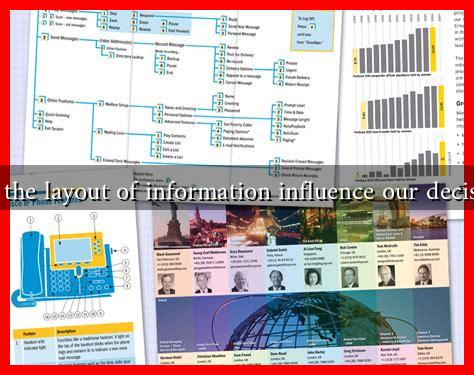-
Table of Contents
Does the Layout of Information Influence Our Decisions?
In an age where information is abundant and easily accessible, the way we present and consume that information plays a crucial role in shaping our decisions. From marketing strategies to educational materials, the layout of information can significantly influence our perceptions, choices, and ultimately, our actions. This article explores how the arrangement of information affects decision-making, supported by research, examples, and case studies.
The Psychology Behind Information Layout
Understanding the psychology of how we process information is essential to grasping its impact on decision-making. Cognitive psychology suggests that humans have limited cognitive resources, which means we often rely on heuristics—mental shortcuts that simplify decision-making. The layout of information can either facilitate or hinder these cognitive processes.
- Visual Hierarchy: The arrangement of elements on a page can guide attention. For instance, larger fonts and bold colors draw the eye, making certain information more prominent.
- Chunking Information: Breaking down complex information into smaller, digestible parts can enhance understanding and retention. This technique is often used in educational settings.
- Consistency and Familiarity: Familiar layouts can reduce cognitive load, allowing individuals to process information more quickly and make decisions with greater confidence.
Case Studies: Real-World Examples
Several case studies illustrate how the layout of information can influence decision-making in various contexts.
1. E-commerce Websites
Online retailers like Amazon have mastered the art of information layout. A study by the Nielsen Norman Group found that users are more likely to make a purchase when product information is presented clearly and concisely. Key elements include:
- High-quality images
- Clear pricing information
- Customer reviews prominently displayed
These elements create a sense of trust and urgency, leading to higher conversion rates.
2. Public Health Campaigns
Public health campaigns often rely on effective information layout to influence behavior. For example, the Centers for Disease Control and Prevention (CDC) uses infographics to convey complex health information. A study published in the American Journal of Public Health found that well-designed infographics significantly improved understanding and retention of health messages, leading to increased vaccination rates.
The Role of Digital Media
In the digital age, the layout of information extends beyond traditional media. Websites, social media platforms, and mobile applications all play a role in shaping our decisions. For instance, the layout of a news website can influence which articles readers choose to engage with. A study by the Journal of Computer-Mediated Communication found that users are more likely to click on articles that are visually appealing and well-organized.
Statistics That Speak Volumes
Several statistics highlight the importance of information layout in decision-making:
- According to a study by Forbes, 94% of first impressions are design-related.
- Research from HubSpot indicates that 70% of consumers prefer to learn about a product through content rather than traditional advertising.
Conclusion: The Power of Layout in Decision-Making
The layout of information is a powerful tool that can significantly influence our decisions. By understanding the psychological principles behind information processing, we can design more effective communication strategies in various fields, from marketing to education and public health. As we continue to navigate an increasingly complex information landscape, recognizing the impact of layout will be essential for making informed decisions.
In summary, whether you are a marketer, educator, or public health official, paying attention to how information is presented can lead to better outcomes and more effective decision-making. The next time you encounter information, consider how its layout might be influencing your choices.

